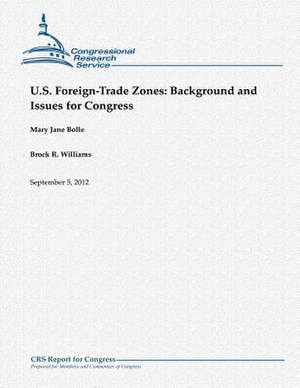U.S. Foreign-Trade Zones
Autor Mary Jane Bolle, Brock R. Williamsen Limba Engleză Paperback
Preț: 99.53 lei
Nou
Puncte Express: 149
Preț estimativ în valută:
19.05€ • 20.37$ • 15.88£
19.05€ • 20.37$ • 15.88£
Carte disponibilă
Livrare economică 27 martie-10 aprilie
Preluare comenzi: 021 569.72.76
Specificații
ISBN-13: 9781480166554
ISBN-10: 1480166553
Pagini: 34
Dimensiuni: 216 x 280 x 2 mm
Greutate: 0.1 kg
Editura: CREATESPACE
ISBN-10: 1480166553
Pagini: 34
Dimensiuni: 216 x 280 x 2 mm
Greutate: 0.1 kg
Editura: CREATESPACE
